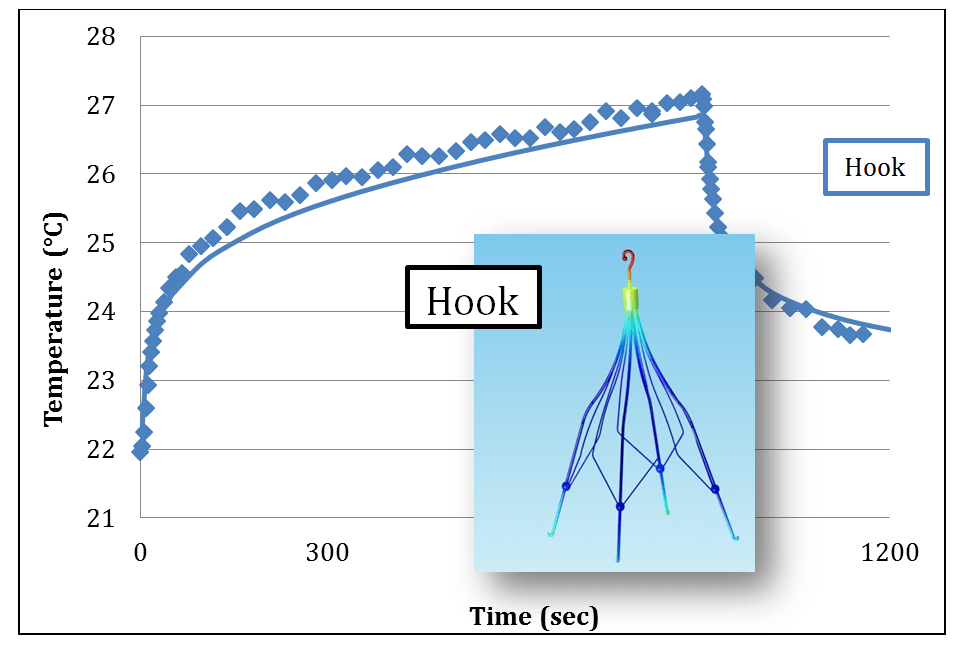RF-induced heating of a complicated structure
MRI Safety
Regarding MRI safety, testing the radio-frequency-induced heating of implanted medical devices is important to prevent harm to patients during MR imaging. ASTM F2182 was developed to describe methods for performing these tests. If the medical device has a complicated structure, where on the device should you measure the temperature? The standard doesn’t say.
To answer this question, MED Institute has developed computational methods for predicting RF-induced heating on complicated structures such as inferior vena cava (IVC) filters.
Using an IVC filter as an example, a finite element model of the RF coil and the filter simulates the electrical field and resultant heating of the human tissue adjacent to the device. The computational analysis using COMSOL Multiphysics® provides a temperature map of the device so that the worst case location of heating can be determined. Physical testing may then be performed with the temperature probes placed at the identified worst case heating locations. In this case, the analysis indicated that the greatest temperature rise caused by the presence of the IVC filter would be in the tissue near the hook. The experimental temperature increase results agreed with the computational analysis results.

On the basis of this safety evaluation, the IVC filter was able to be marked as MR Conditional—it is safe for MR scanning under defined conditions.
COMSOL Multiphysics is a registered trademark of COMSOL AB.
For more information about our MRI testing services, please contact us today 855.463.1633 | askmed@medinstitute.com | medinstitute.com.
Get email about news, services, and events from MED Institute.
OUR COMMITMENT
We are committed to consistently performing services with high quality, that deliver exceptional results, and add value to the client’s business.
For client surveys sent since 2024, we received ratings of 4.99/5 (16).
